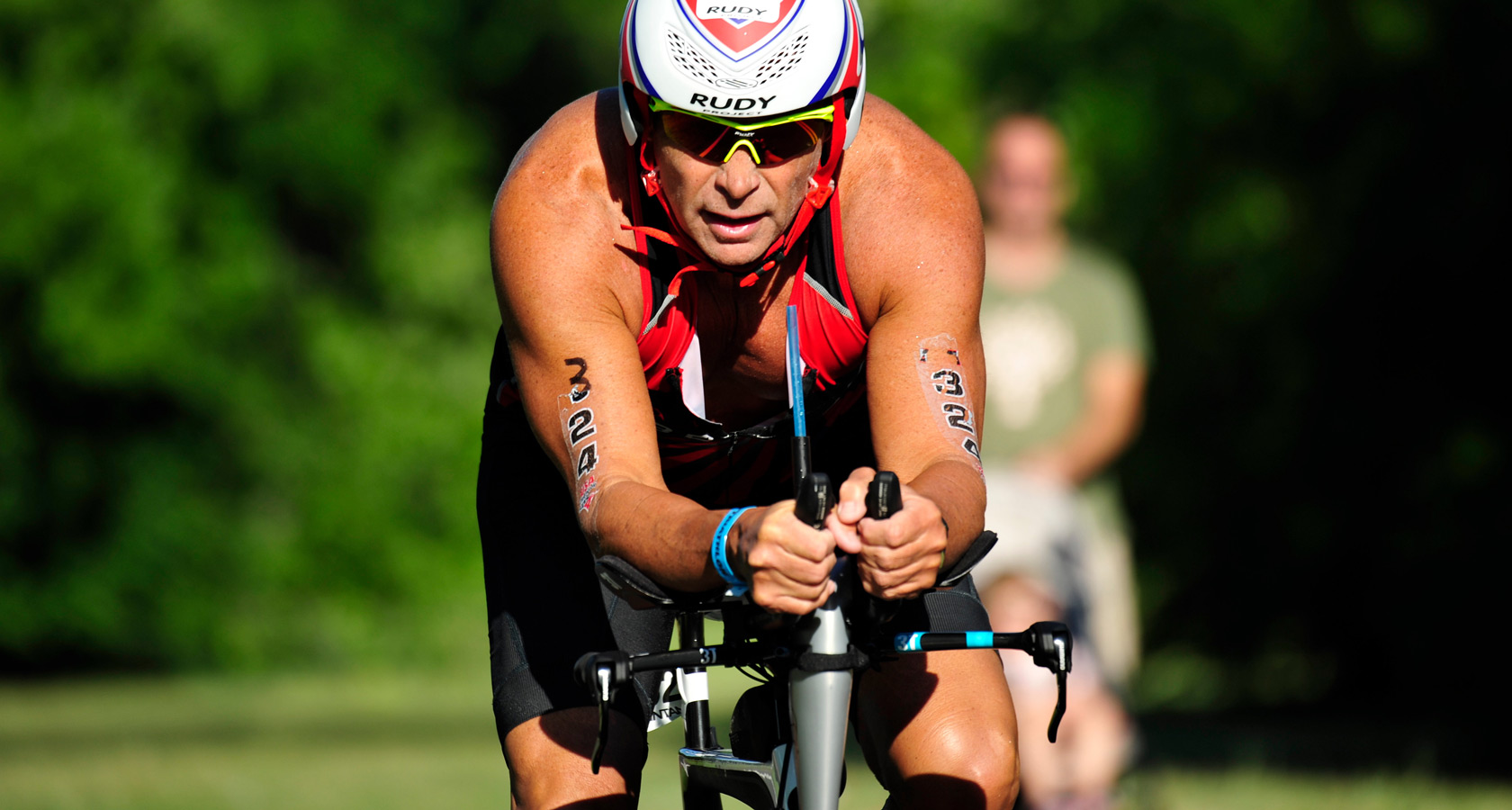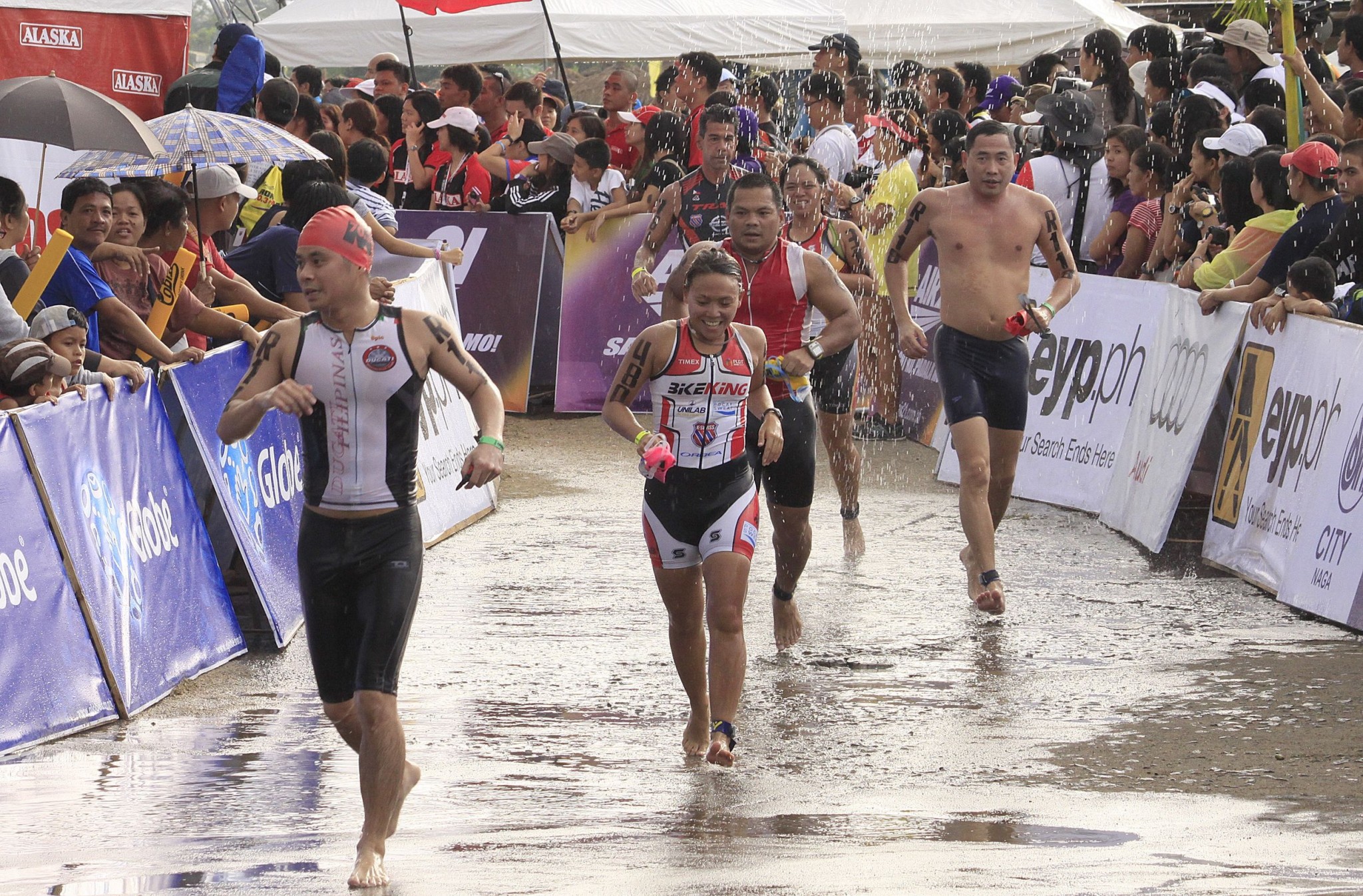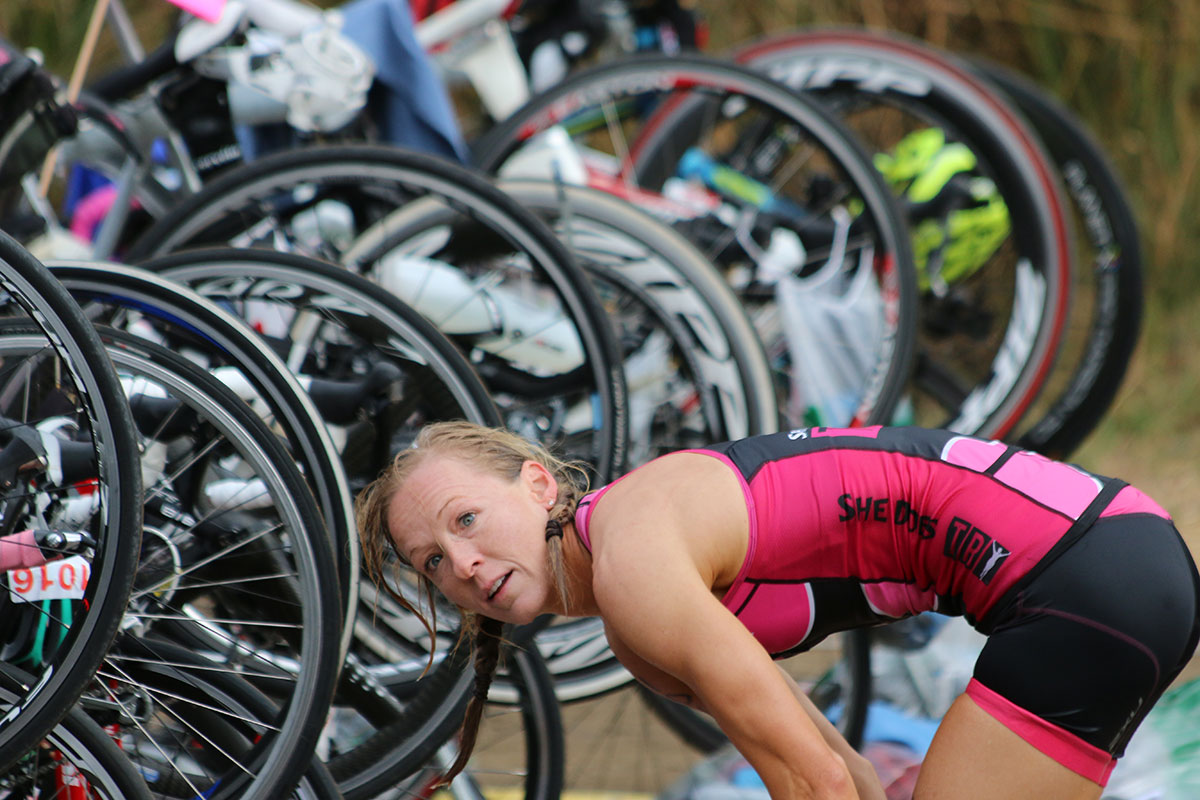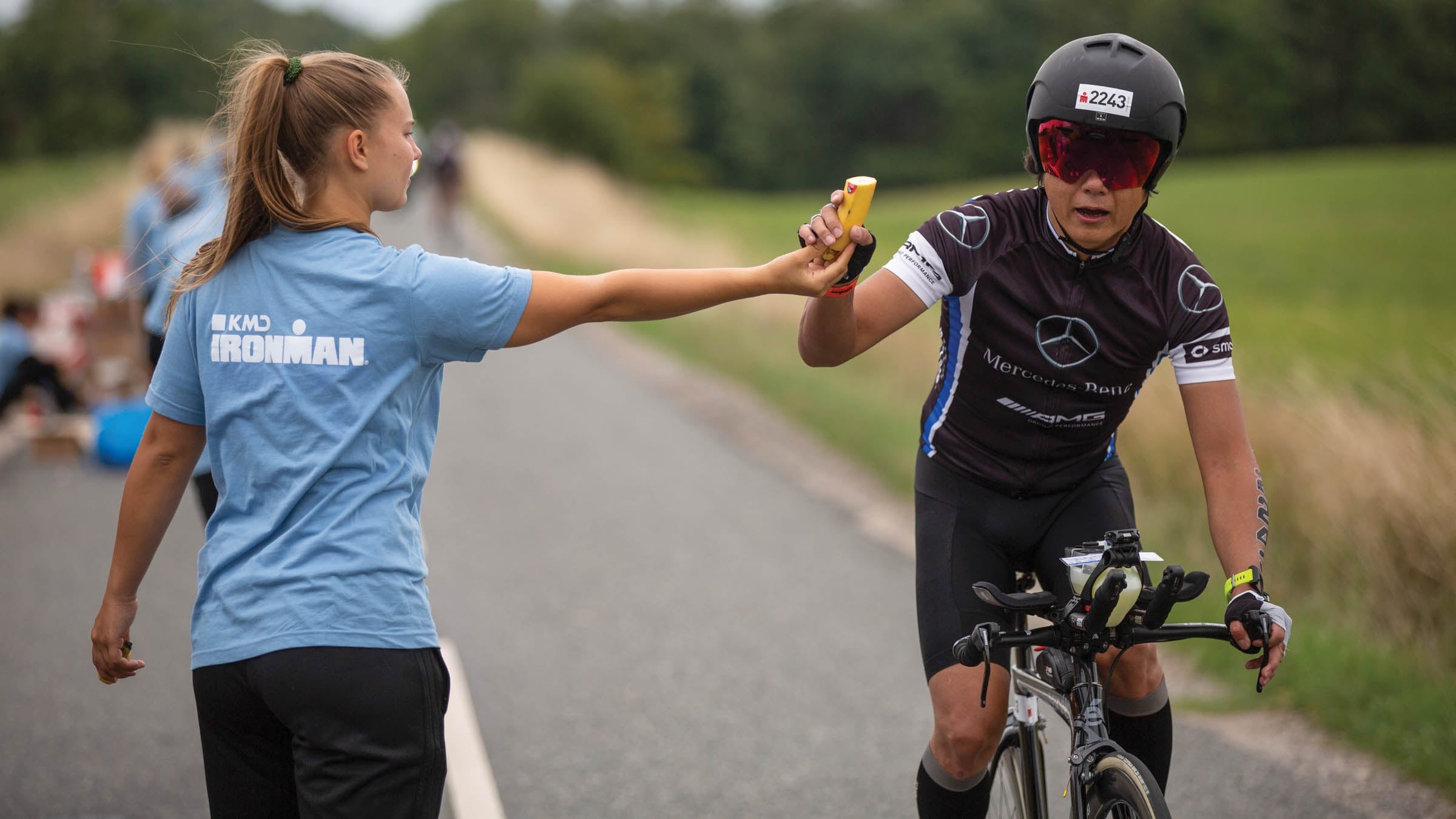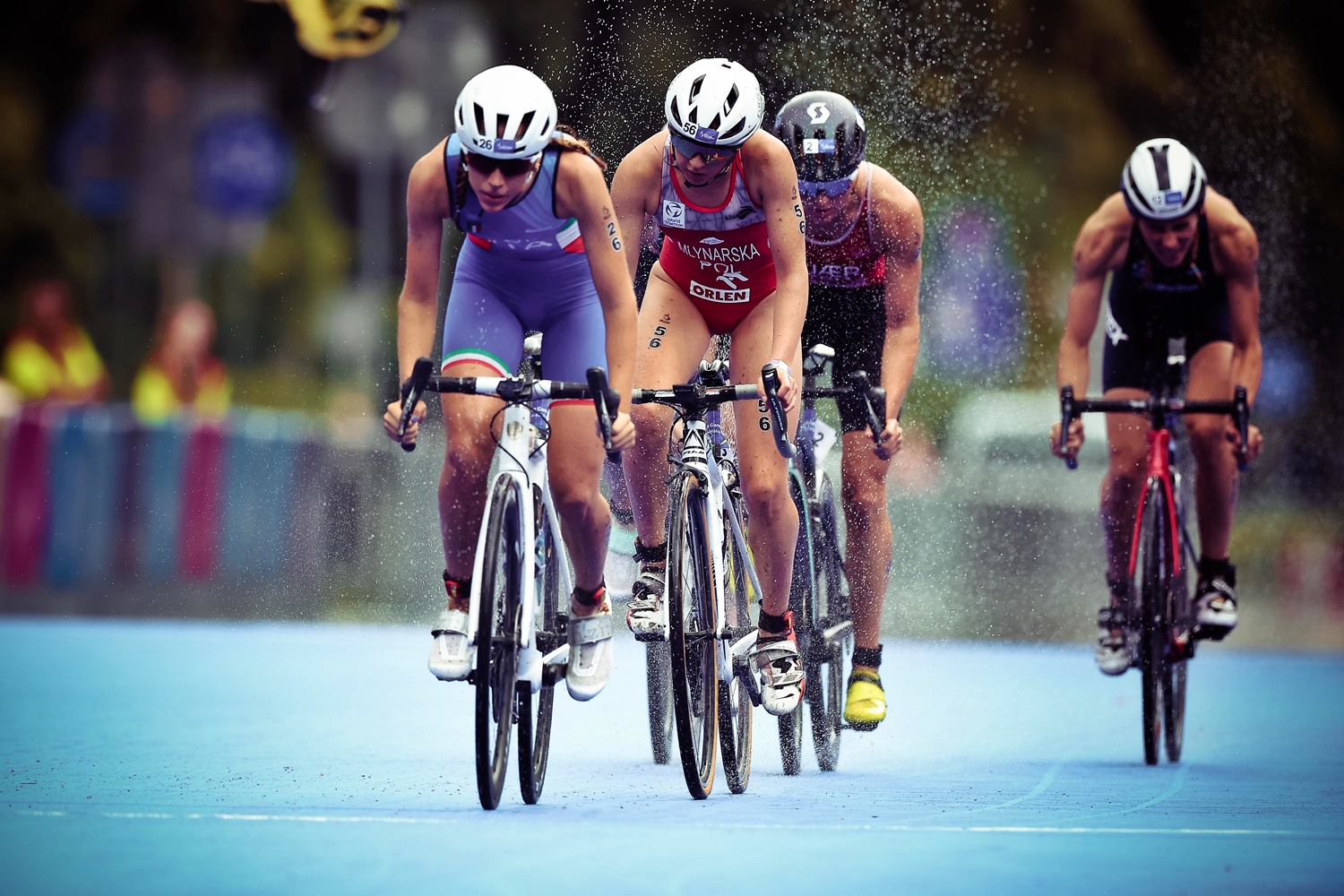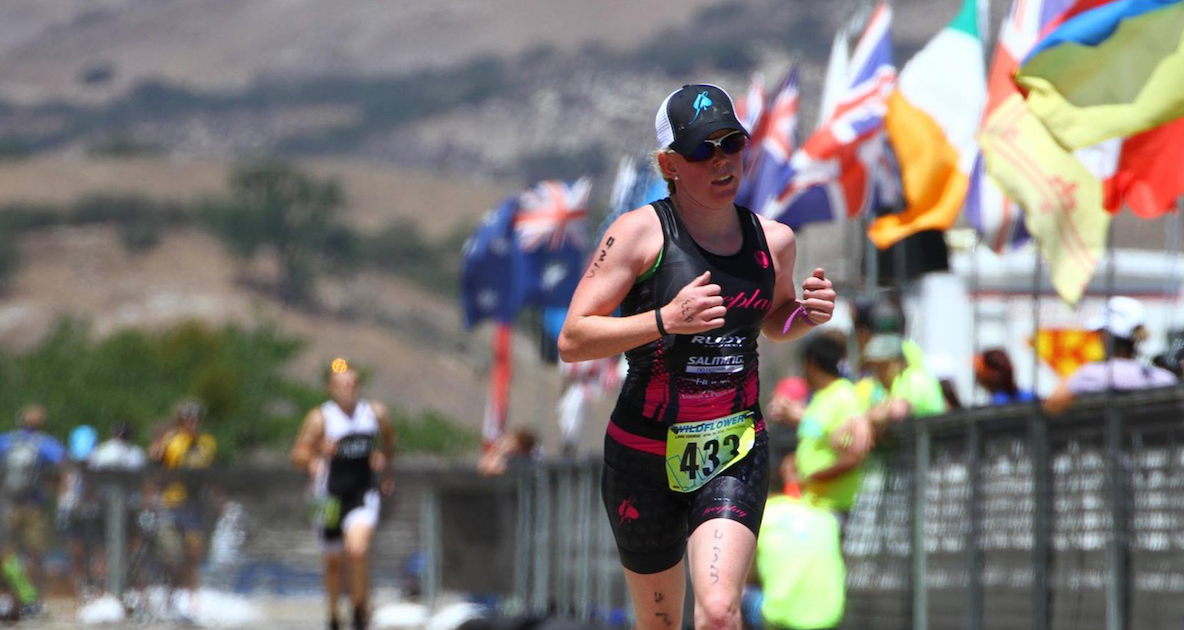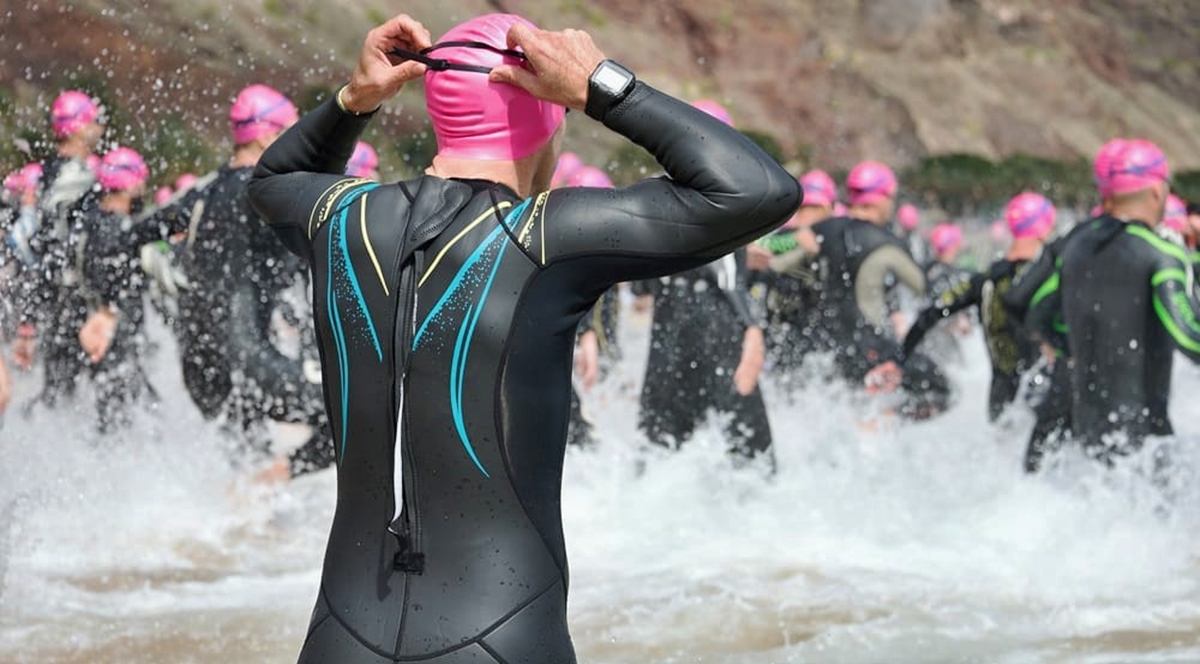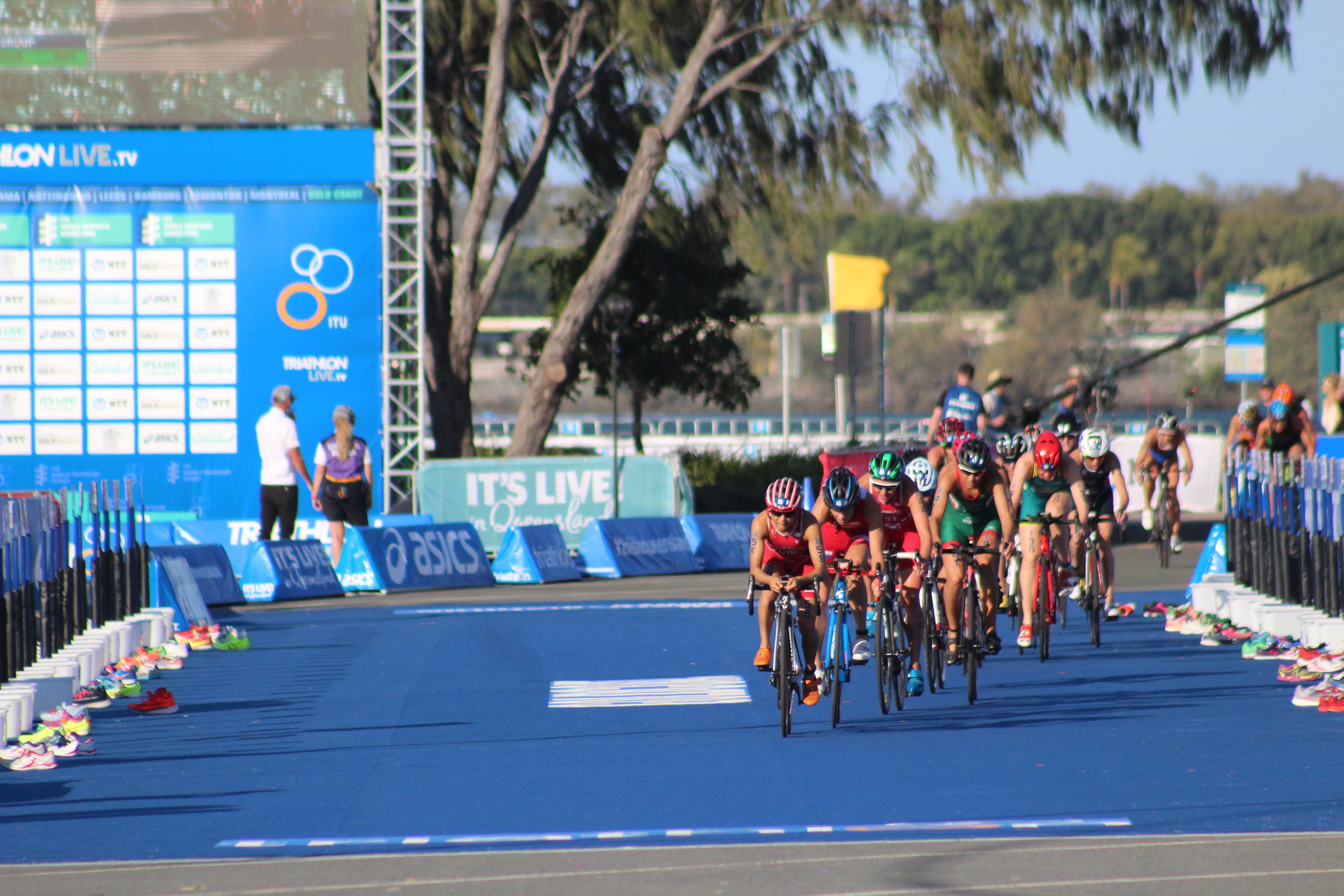

Featured
How To Train For A Triathlon
Modified: October 3, 2023
Discover the essential components of a featured triathlon build-up routine for optimal performance. Perfect your training, nutrition, and recovery strategies to excel in your upcoming race.
Introduction
Welcome to the exciting world of triathlon! Whether you are a beginner or a seasoned athlete looking to challenge yourself, embarking on the journey of training and competing in a triathlon is a thrilling endeavor that requires careful planning and preparation. In this article, we will explore the importance of a proper build-up in triathlon training and provide you with valuable insights and strategies to maximize your potential.
Triathlon, as most people know, is a multi-disciplinary endurance sport that combines swimming, cycling, and running into a single race. It demands not only physical fitness but also mental fortitude and strategic approach. Completing a triathlon requires not only stamina, but also the ability to transition seamlessly between each leg of the race.
One of the key factors that will determine your success in a triathlon is the quality and effectiveness of your build-up phase. The build-up phase refers to the period of time leading up to the race where you focus on gradually increasing your fitness, improving your technique, and preparing your body both mentally and physically for the demands of the race.
Having a structured and well-planned training plan is essential to ensure that you reach the starting line fully prepared and ready to give your best performance. It is during this build-up phase that you will lay the foundation for your endurance, develop the necessary skills and techniques for each discipline, and build your overall strength and stamina.
Without a proper build-up, you risk overtraining, injury, and burnout, which can significantly hinder your performance on race day. A well-executed build-up phase not only increases your physical fitness and performance capabilities, but it also improves your mental resilience and confidence, helping you overcome any challenges that may arise during the race.
In the following sections, we will delve deeper into the various aspects of a triathlon build-up, including goal setting, training techniques for each discipline, strength and conditioning, nutrition and hydration, rest and recovery, mental preparation, and gear and equipment. By paying attention to these key factors and implementing the right strategies, you will set yourself up for a successful and enjoyable triathlon experience.
Understanding Triathlon
Before diving into the specifics of triathlon build-up, it is important to have a clear understanding of what the sport entails. Triathlon is a multisport event that combines swimming, cycling, and running into a single race. Athletes compete in various distances, including sprint, Olympic, half ironman, and ironman.
Swimming is the first discipline in a triathlon and takes place in open water, such as lakes, rivers, or oceans, or in a pool for indoor races. Athletes must navigate a designated distance, often in the form of a loop, and can use various strokes, such as freestyle, breaststroke, or backstroke. It is crucial for triathletes to develop proper technique and efficiency in the water to conserve energy for the remaining two legs of the race.
The second discipline is cycling, in which athletes transition from the swim to a bike ride. Triathletes utilize specialized bikes designed for speed and efficiency. The cycling leg can vary in distance, ranging from a few kilometers in sprint triathlons to over 180 kilometers in full ironman races. It is important to train for endurance, improve pedaling technique, and optimize bike handling skills to maximize efficiency and conserve energy for the final leg.
The third and final discipline is running, which follows the bike leg. Triathletes must transition seamlessly from cycling to running without losing momentum. Running distances range from a few kilometers in sprint triathlons to a full marathon in ironman races. Endurance, running form, and mental strength are key components of successful triathlon running.
Understanding the order and distances of each discipline is crucial in planning your training and build-up strategy. Knowing the specific requirements of each leg will help you focus on the necessary skills and conditioning needed to perform well in the race.
Triathlon is a sport that rewards consistency and discipline. It requires balancing the demands of three different disciplines while also managing time for rest and recovery. It is essential to approach training with a holistic mindset, recognizing the interconnectedness of the three disciplines and the importance of overall fitness and conditioning.
Now that we have a solid understanding of the basics of triathlon, let’s delve deeper into the specifics of a well-structured build-up phase to set you up for success in your triathlon journey.
Importance of Proper Build-Up
The build-up phase of triathlon training serves as the foundation for success in the race. It is the period where athletes gradually increase their fitness levels, hone their skills, and prepare themselves mentally and physically for the demands of the triathlon. Properly executing the build-up phase is essential for several reasons.
First and foremost, a well-structured build-up allows your body to adapt gradually to the increased levels of training. It helps prevent overuse injuries and ensures that your body is adequately prepared for the rigorous demands of the race. By progressively increasing your training load, you give your muscles, tendons, and joints the opportunity to strengthen and adapt, reducing the risk of injury on race day.
Additionally, a proper build-up phase allows you to establish a solid aerobic base. Aerobic fitness is vital in triathlon, as it provides the endurance necessary to complete the demanding distances in each discipline. By focusing on longer, slower workouts during the build-up phase, you enhance your body’s ability to use oxygen efficiently and improve your endurance capacity.
Proper build-up also gives you a chance to refine your technique in each discipline. Whether it’s improving your swim stroke, perfecting your cycling form, or fine-tuning your running gait, the build-up phase allows for dedicated practice and skill development. This attention to technique not only enhances efficiency but also helps conserve energy, translating into improved performance during the race.
Another crucial aspect of the build-up phase is mental preparation. Triathlon is not just a physical challenge but also a mental one. The extended duration of the race and the transitions between disciplines can be mentally taxing. By gradually increasing your training intensity and duration, you acclimate your mind to the demands of the race and develop mental resilience. This mental fortitude will be instrumental in overcoming obstacles and pushing through fatigue during the triathlon.
A proper build-up phase also allows you to set realistic and achievable goals for the race. By progressively improving your fitness and technique, you gain a clearer understanding of your strengths and areas for improvement. This knowledge helps you establish specific and measurable goals that align with your capabilities and aspirations. Setting appropriate goals during the build-up phase provides focus, motivation, and a sense of achievement as you work towards them.
In summary, the build-up phase of triathlon training is of utmost importance for several reasons. It allows for gradual adaptation and reduces the risk of injury, enhances aerobic fitness, refines technique, builds mental resilience, and sets achievable goals. By giving proper attention and focus to the build-up phase, you set yourself up for success on race day, ensuring that you perform to the best of your abilities and have a rewarding triathlon experience.
Setting Goals
Setting goals is a crucial aspect of triathlon training, as it provides a sense of direction, motivation, and focus throughout the build-up phase. Properly defined goals help athletes stay committed, track progress, and gauge their readiness for the triathlon. When it comes to setting goals, it is important to consider the following aspects:
1. Specificity: Clearly define your goals. Instead of simply aiming to “do well” in the triathlon, set specific targets such as improving your swim time or completing the race in a particular time frame. Specific goals provide clarity and allow you to create a plan of action to achieve them.
2. Measurability: Ensure that your goals are measurable, allowing you to track your progress and evaluate your performance. This could involve setting targets for distances, times, or performance metrics such as heart rate zones or power output on the bike. Measurable goals enable you to assess your improvements and make adjustments as needed.
3. Realistic and Attainable: Set goals that are challenging yet realistic and attainable. Consider your current fitness level, time constraints, and the duration of the build-up phase. Being overly ambitious may lead to frustration or burnout, while setting goals that are too easy may not provide enough motivation. Finding the right balance is key.
4. Time-Bound: Set a timeframe for achieving your goals. Having a target date or race day can help create a sense of urgency and allow you to structure your training accordingly. It also provides a timeline for tracking progress and assessing your readiness for the triathlon.
5. Long-term and Short-term Goals: Consider both long-term and short-term goals to provide a sense of progression and accomplishment. Long-term goals may involve completing a specific distance or qualifying for a prestigious race, while short-term goals can focus on monthly or weekly objectives that contribute to your overall progress.
6. Process-oriented: In addition to outcome-based goals, it is important to set process-oriented goals that focus on the actions and behaviors necessary to achieve your desired outcomes. These goals may include consistency in training, improving technique, or incorporating strength and conditioning exercises into your routine. Process-oriented goals help ensure you have a well-rounded approach to your build-up phase.
7. Adjustability: Be open to adjusting your goals as needed throughout the build-up phase. Factors such as injuries, unforeseen challenges, or changes in circumstances may require modifying your goals to remain realistic and attainable. The ability to adapt and pivot when necessary is vital for progress and success.
By setting well-defined and meaningful goals, you create a roadmap for your triathlon journey. These goals provide focus, motivation, and a sense of purpose, pushing you to stay committed and dedicated to your training. They also serve as benchmarks for evaluating your progress and determining the effectiveness of your build-up phase.
Remember, goal setting is a dynamic process. Continuously review and reassess your goals, making adjustments as needed. Be flexible and adaptable, all while keeping your eye on the bigger picture of successfully completing your triathlon. With the right goals in place, you will have a clear path to follow throughout your build-up phase, setting yourself up for a rewarding and successful race day experience.
Training Plan Overview
A well-structured training plan is essential for a successful triathlon build-up. It provides a framework for your workouts, ensuring that you are incorporating the right balance of endurance, speed, and technique training for each discipline. Here is an overview of the key components of a triathlon training plan:
1. Periodization: A training plan should include a periodized approach, dividing the build-up phase into distinct blocks or phases. This allows for proper progression and prevents overtraining. Typically, a training plan begins with a base phase focused on building endurance, followed by a build phase to increase intensity and add speed work, and ends with a taper phase to allow for recovery and peak performance on race day.
2. Training Volume: The training plan should outline the overall volume of training, specifying the number of workouts and the duration of each session. Gradually increasing volume over time helps your body adapt to the demands of the race. The plan should also include rest days or lighter recovery workouts to allow for adequate recovery and prevent overuse injuries.
3. Discipline-specific Training: The training plan should allocate sufficient time to each discipline: swimming, cycling, and running. It should include specific workouts that address the unique demands of each discipline, such as interval training, long endurance sessions, and technique drills. The training plan should prioritize areas of weakness and allow for progression in skill development and performance improvements.
4. Strength and Conditioning: Incorporating strength and conditioning exercises into your training plan is essential for injury prevention and overall performance. The plan should include dedicated sessions for strength training, focusing on core stability, muscular endurance, and sport-specific exercises. These sessions can complement your swim, bike, and run workouts to enhance overall strength and improve race efficiency.
5. Cross-training: Integrating cross-training activities, such as yoga, Pilates, or cross-training workouts, can provide additional benefits to triathlon training. These activities help improve flexibility, balance, and overall body conditioning while providing a break from the repetitive motions of swimming, cycling, and running.
6. Technique Work: A training plan should include regular sessions dedicated to improving technique in each discipline. Technique drills and form-focused workouts help refine your skills and improve efficiency. These sessions should be incorporated throughout the build-up phase to continuously enhance your technique and maximize performance.
7. Rest and Recovery: Adequate rest and recovery are essential for progress and injury prevention. The training plan should include scheduled rest days and lighter training weeks to allow for physiological adaptation and mental rejuvenation. It is during rest periods that your body repairs and rebuilds, ultimately enhancing your overall performance.
8. Progression: The training plan should outline a progressive approach, gradually increasing the intensity and duration of workouts over time. This ensures that your body adapts to the training stimulus and allows for continual improvements in fitness and performance. Progressive overload is key to avoid plateaus and achieve optimal race readiness.
9. Flexibility: A good training plan should be flexible and adaptable. It should account for unexpected events, changes in weather, or personal circumstances. Being able to modify your training plan when necessary helps maintain consistency and mitigate potential setbacks.
By following a well-structured training plan, you optimize your preparation for the triathlon and greatly increase your chances of success on race day. The plan provides a clear roadmap, incorporating all the necessary components to build endurance, improve skills, and optimize performance. Remember to always listen to your body, make adjustments as needed, and seek guidance from experienced coaches or professionals if necessary. With a solid training plan in place, you will be well on your way to reaching your triathlon goals.
Swim Training Techniques
The swim leg is the first discipline in a triathlon and can often be the most challenging for many athletes. However, with proper swim training techniques, you can improve your efficiency, endurance, and overall performance in the water. Here are some key swim training techniques to incorporate into your triathlon build-up:
1. Technique Focus: Technique is crucial in swimming. Focusing on proper form and efficiency will help you conserve energy and swim faster. Work on maintaining a streamlined body position by keeping your head aligned with your spine, engaging your core, and extending your arms fully with each stroke. Practice a smooth and relaxed swim stroke, allowing your body to glide through the water with minimal resistance.
2. Drills: Incorporate swim drills into your training sessions to reinforce proper technique and improve specific aspects of your stroke. Drills such as sculling, catch-up drill, fingertip drag, and one-arm drill help isolate and strengthen different parts of your stroke, enhancing efficiency and improving muscle memory.
3. Endurance Training: Building swim endurance is essential for triathlon. Gradually increase your swim distance in training, focusing on maintaining a steady pace. Include longer intervals or continuous swims in your workouts to improve your aerobic capacity and build endurance. Consistency is key, so aim to swim regularly throughout the week to develop a solid base level of swim fitness.
4. Speed Work: Incorporate speed work into your swim training to improve your race pace. Interval training, such as sprint sets or fast repeats, can help you develop speed and improve your ability to sustain higher intensities during the swim leg. Include shorter, high-intensity intervals with rest periods to challenge your body and improve your race-specific speed.
5. Open Water Skills: Since triathlons involve swimming in open water, it is essential to practice open water skills during your swim training. This includes sighting techniques, learning to navigate in open water, and adapting to different environmental conditions. Find opportunities to swim in open water, such as lakes or oceans, to familiarize yourself with the challenges specific to race day.
6. Swim-Run Transitions: Practice swim-run transitions to improve your transition time and adaptability. Incorporate short runs immediately after swimming to simulate the feeling of transitioning from the water to the run. This helps train your body to adjust quickly and smoothly between disciplines, improving your overall efficiency during the race.
7. Video Analysis: Consider using video analysis to assess your swim technique and make necessary corrections. Recording your swim sessions and reviewing the footage with a coach or experienced swimmer can provide valuable insights into areas that need improvement. They can identify any flaws in your stroke mechanics and provide specific recommendations for technique refinement.
8. Pool and Open Water Training: It’s important to incorporate a mix of pool and open water swim training into your build-up phase. Pool sessions allow you to focus on structured workouts, technique drills, and interval training, while open water sessions help you become comfortable with the unpredictable conditions and develop open water-specific skills.
Remember, swim training is not just about swimming longer distances or at faster speeds. It’s about efficiency, technique, and adapting to open water conditions. With proper swim training techniques, you can enhance your performance in the water and set yourself up for a strong start to your triathlon race.
Bike Training Techniques
The bike leg of a triathlon is a significant portion of the race and requires specific training techniques to build strength, endurance, and efficiency on the bike. By incorporating the following bike training techniques into your triathlon build-up, you can improve your cycling performance and maximize your overall race performance:
1. Endurance Rides: Building endurance is essential for triathlon cycling. Incorporate longer rides into your training plan to develop your aerobic capacity and strengthen your cardiovascular system. Gradually increase your ride duration and distance, simulating race conditions to improve your ability to sustain effort over an extended period.
2. Interval Training: Intervals are a valuable training tool to improve speed, power, and race-specific efforts on the bike. Include interval sessions in your training plan, such as high-intensity intervals at or above your race pace, followed by recovery periods. This helps increase your lactate threshold, improve your muscular endurance, and simulate the demands of the race.
3. Hill Repeats: Incorporate hill repeats into your training to develop strength, power, and climbing skills. Find a suitable hill or include a resistance setting on a stationary bike, and perform repeated uphill efforts, focusing on maintaining a steady cadence and proper climbing technique. This will enhance your ability to tackle hilly race courses and maintain power output.
4. Time Trial Training: Time trials are an effective way to gauge your cycling progress and build race-specific fitness. Set specific time trial distances or routes to test your speed and endurance. Time trials also help refine your pacing strategy and mental focus, simulating the race-day effort and allowing you to practice optimal pacing strategies.
5. Cadence Work: Focus on your pedal cadence during training to improve efficiency and develop a smooth cycling motion. Experiment with different cadences during your rides, ranging from higher cadences (80-100 RPM) for endurance efforts to lower cadences (60-80 RPM) for strength intervals. Practicing different cadences helps you develop the ability to adapt to various terrains and conditions.
6. Brick Workouts: Incorporate brick workouts, which involve transitioning directly from the bike to the run, into your training plan. By practicing quick and efficient transitions, your body becomes accustomed to the unique sensations and challenges of the bike-to-run transition. This helps improve your ability to adjust, maintain the desired pace, and reduce muscle fatigue during the run leg of the triathlon.
7. Bike Handling Skills: Enhance your bike handling skills to improve your confidence and safety on the road. Practice cornering, braking, and maneuvering at different speeds to become more comfortable and in control during race conditions. Developing bike handling skills helps you handle technical sections, ride in a group, and navigate challenging race courses with ease.
8. Bike Fit and Equipment: Ensuring a proper bike fit and using suitable equipment is vital for optimal performance and injury prevention. Seek professional assistance to ensure that your bike is adjusted correctly to your body measurements and riding style. Additionally, invest in quality cycling gear, including a well-fitting helmet, appropriate footwear, and gear ratios suited for the race course and your fitness level.
By incorporating these bike training techniques into your triathlon build-up, you can improve your cycling performance, increase endurance, and enhance your overall race performance. Remember to balance your bike training with swim and run workouts to maintain a well-rounded approach to your triathlon preparation.
Run Training Techniques
The run leg in a triathlon can often be the make or break discipline, as it is the final stage of the race where fatigue sets in. Incorporating specific run training techniques into your triathlon build-up will help improve your running efficiency, endurance, and overall performance. Here are some key run training techniques to consider:
1. Endurance Runs: Building endurance is crucial for the run leg of a triathlon. Include long runs in your training plan to develop your aerobic capacity and strengthen your ability to sustain a steady pace over extended distances. Gradually increase your run duration, replicating race conditions to improve your mental and physical preparedness.
2. Interval Training: Incorporate interval training into your run workouts to improve your speed and race-specific efforts. Interval sessions involve alternating periods of higher intensity running with recovery periods. This helps develop your anaerobic threshold, improve your running economy, and simulate the demands of the race.
3. Tempo Runs: Tempo runs are longer sustained efforts at a comfortably challenging pace, just below your lactate threshold. These runs help improve your endurance, increase your lactate threshold, and enhance your ability to maintain a steady pace during the run leg of the triathlon. Include tempo runs regularly in your training plan.
4. Hill Repeats: Incorporate hill repeats to build strength, power, and improve your ability to tackle inclines during the run leg. Find a suitable hill and perform repeated uphill sprints, focusing on maintaining good form and a strong cadence. Hill repeats help improve leg strength, running economy, and mental toughness.
5. Fartlek Training: Fartlek, or speed play, involves alternating between periods of faster running and recovery periods. Fartlek workouts can be structured or unstructured, varying your pace and effort throughout the run. This technique helps improve your ability to change gears, anaerobic capacity, and mental resilience.
6. Brick Workouts: Integrate brick workouts, where you transition from the bike to a run, into your training plan. These workouts mimic the feeling of running off the bike during the race. By practicing quick transitions and adapting to the feeling of running with fatigued legs, you improve your ability to maintain a strong pace and reduce muscle fatigue during the run leg.
7. Cadence Work: Pay attention to your running cadence, which is the number of steps you take per minute, and aim for an optimal cadence of around 180 steps per minute. Increasing your cadence can help improve your running efficiency and reduce the risk of overstriding and potential injuries.
8. Rest and Recovery: Adequate rest and recovery are crucial for preventing overuse injuries and maximizing performance gains. Include rest days and lighter recovery runs in your training plan to allow your body to recover and adapt from the training stress. Prioritize sleep, nutrition, and other recovery practices to optimize your running performance.
9. Mental Toughness: Running in a triathlon requires mental resilience. Incorporate mental training techniques, such as visualization, positive self-talk, and goal-setting, into your run training. Building mental toughness will help you push through fatigue, maintain focus, and stay motivated during the run leg of the triathlon.
By incorporating these run training techniques into your triathlon build-up, you can improve your running efficiency, endurance, and overall performance. Remember to gradually increase training volume, listen to your body, and seek professional guidance if needed. With dedicated training, mental fortitude, and a focus on proper technique, you’ll be well-prepared to conquer the run leg of your triathlon.
Strength and Conditioning
Incorporating strength and conditioning exercises into your triathlon build-up is crucial for improving performance, preventing injuries, and enhancing overall endurance and power. Strengthening your muscles and conditioning your body to handle the demands of the three disciplines will contribute to improved performance on race day. Here are some key aspects to consider when it comes to strength and conditioning:
1. Full-Body Strength Training: Focus on developing overall body strength with exercises that target major muscle groups, such as squats, lunges, deadlifts, and push-ups. Incorporating compound movements engages multiple muscle groups simultaneously, mimicking the movement patterns required in triathlon.
2. Core Stability: A strong core is essential for proper posture, efficient movement, and injury prevention in all three triathlon disciplines. Include exercises like planks, Russian twists, and bicycle crunches to strengthen your core muscles. A stable and strong core also improves your ability to transfer power generated from your legs to your upper body and enhances overall stability during the race.
3. Functional Movements: Incorporate functional exercises that replicate the movements involved in swimming, cycling, and running. This may include exercises like kettlebell swings, step-ups, TRX rows, and single-leg squats. Functional movements improve coordination, balance, and muscular endurance, enhancing your performance in each discipline.
4. Plyometric Training: Incorporating plyometric exercises, such as box jumps, lateral jumps, and plyometric push-ups, can help improve power, explosive strength, and quickness. Plyometrics simulate the dynamic movements required in triathlon, helping you generate more force and speed during the race.
5. Flexibility and Mobility: Maintain flexibility and mobility through regular stretching and foam rolling. This improves joint range of motion, enhances muscle recovery, and reduces the risk of injuries. Focus on areas prone to tightness, such as hips, hamstrings, and calves, to optimize your running gait and cycling efficiency.
6. Injury Prevention: Incorporate exercises that target specific areas prone to injury in triathlon, such as the shoulders, knees, and ankles. Strengthening these areas through exercises like shoulder external rotations, single-leg squats, and ankle stability drills can help prevent common overuse injuries and improve overall joint stability.
7. Periodization: Apply a periodized approach to your strength and conditioning training, just like you would with your triathlon training plan. Gradually increase the intensity, volume, and complexity of the exercises over the course of your build-up phase. This allows your body to adapt and progress while minimizing the risk of overtraining and injury.
8. Cross-Training: Incorporate cross-training activities like yoga, Pilates, or swimming alongside your strength training. Cross-training helps improve flexibility, balance, and overall body conditioning, providing a balanced approach to your overall fitness and reducing the risk of overuse injuries.
Remember to seek guidance from a qualified strength and conditioning specialist or coach to ensure proper technique and to tailor exercises to your individual needs and abilities. By implementing a well-rounded strength and conditioning program, you will improve your overall performance, reduce the risk of injuries, and enhance your ability to push through the challenges of a triathlon.
Nutrition and Hydration
Nutrition and hydration play a critical role in fueling your body, optimizing performance, and promoting overall health during your triathlon build-up. Proper nutrition and hydration support your training efforts, aid in recovery, and ensure you have the energy and nutrients needed to perform at your best. Here are some key considerations for nutrition and hydration in triathlon:
1. Balanced Macronutrients: Consume a well-balanced diet that includes all three macronutrients – carbohydrates, protein, and fats. Carbohydrates provide the primary fuel for endurance exercise, while protein supports muscle repair and recovery. Healthy fats are essential for energy and hormone production. Focus on whole, unprocessed foods that provide a variety of nutrients.
2. Carbohydrate Timing and Amount: Prioritize carbohydrates to fuel your training and optimize glycogen stores. Consume a carbohydrate-rich meal or snack before long or intense training sessions. During longer training sessions, aim to consume carbohydrates every 30-60 minutes to maintain energy levels. Experiment with different forms of carbohydrates, such as energy gels, chews, or sports drinks, to find what works best for you.
3. Protein for Recovery: Include adequate protein in your diet to support muscle repair and recovery. Consume a source of protein within 30-60 minutes post-training to maximize the benefits. Lean meats, fish, dairy, eggs, legumes, and plant-based protein sources like tofu or tempeh are all excellent options.
4. Hydration Monitoring: Stay properly hydrated before, during, and after training sessions. Monitor your hydration status by checking urine color – aim for a pale yellow color. During training, sip water or a sports drink regularly, especially in longer or hotter sessions. Practice your hydration strategy during training to ensure you have a plan for race day.
5. Electrolyte Balance: Electrolytes, such as sodium, potassium, and magnesium, are essential for proper muscle function, hydration, and fluid balance. During longer training sessions, consider using electrolyte supplements or sports drinks that provide these essential minerals. Include foods rich in electrolytes, like bananas, leafy greens, and nuts, in your diet.
6. Pre-Race Meal Planning: Develop a pre-race meal plan and practice it before key training sessions. Aim for a meal rich in carbohydrates, moderate in protein, and low in fat around 2-3 hours before the race. Experiment with different foods to find what settles well with you and provides optimal energy without causing stomach discomfort.
7. Race Nutrition Strategy: Develop a race nutrition strategy based on the duration of the event and your individual needs. Practice this strategy during training sessions to ensure it works for you. Consider using a mix of fluids, gels, bars, or real food that provide a good balance of carbohydrates and electrolytes to sustain your energy levels throughout the race.
8. Nutrient Timing: Pay attention to nutrient timing around your training sessions. Fueling properly before and after training is crucial for performance and recovery. Consuming carbohydrates and protein within the appropriate timeframes can maximize glycogen replenishment and muscle repair.
Remember, nutrition and hydration strategies should be individualized to meet your specific needs, goals, and preferences. Experiment with different foods and timing to find what works best for you. Consult a registered dietitian or sports nutritionist for personalized guidance to ensure your nutrition supports your triathlon training and race day performance.
Rest and Recovery
Rest and recovery are essential components of a successful triathlon build-up. Adequate rest allows your body to adapt to the training stress, repair tissues, and replenish energy stores, leading to improved performance and reduced risk of overuse injuries. Here are some key considerations for rest and recovery:
1. Sleep: Make quality sleep a priority. Aim for 7-9 hours of uninterrupted sleep each night to support optimal physical and mental recovery. Sleep is when your body undergoes important processes for tissue repair, muscle growth, and hormone regulation. Develop a consistent sleep routine and create a sleep-friendly environment.
2. Active Recovery: Incorporate light exercise or active recovery days into your training plan. Engaging in low-impact activities like swimming, cycling, or walking can promote blood flow, enhance muscle recovery, and reduce muscle soreness. Active recovery helps maintain fitness without adding significant stress to your body.
3. Rest Days: Schedule dedicated rest days in your training plan to allow for complete physical and mental recovery. Rest days are opportunities for your body to repair and rebuild, reducing the risk of overuse injuries and burnout. Use these days to engage in gentle stretching, foam rolling, or other relaxation techniques.
4. Nutrition: Proper nutrition fuels your recovery. Consume a balanced diet that includes quality carbohydrates, protein, and healthy fats to support muscle repair and replenish glycogen stores. Emphasize whole foods, fruits, vegetables, and include adequate hydration to optimize your recovery process.
5. Relaxation Techniques: Incorporate relaxation techniques into your daily routine to manage stress and promote overall well-being. Techniques such as deep breathing exercises, mindfulness meditation, or yoga can help reduce muscle tension, improve mental focus, and enhance recovery.
6. Massage and Foam Rolling: Use self-massage techniques, foam rolling, or schedule regular massages to relieve muscle tension, improve circulation, and promote faster recovery. Foam rolling can help release muscle knots and tightness, reducing the risk of injuries and aiding in muscle recovery.
7. Listen to Your Body: Pay attention to your body’s signals and adjust your training accordingly. If you feel excessively fatigued or notice persistent muscle soreness, consider taking an extra rest day or reducing the intensity or volume of your workouts. Pushing through fatigue can increase the risk of injury.
8. Mental Recovery: Rest and recovery also encompass mental rejuvenation. Engage in activities that help you relax and destress. This could include reading, spending time with loved ones, practicing hobbies, or engaging in mindfulness practices. A refreshed and focused mind contributes to overall well-being and race readiness.
Remember that rest and recovery are not signs of weakness but essential components of a well-rounded training program. Prioritizing rest allows your body to adapt, recover, and build strength for improved performance on race day. By balancing your training efforts with proper rest and recovery, you optimize your chances of success in your triathlon build-up.
Mental Preparation
Mental preparation is a crucial aspect of triathlon training that can significantly impact your performance on race day. Developing mental resilience, focus, and confidence will help you overcome challenges, maintain motivation, and perform at your best. Here are some key strategies for mental preparation:
1. Goal Setting: Set specific and measurable goals for your triathlon build-up. Having clear objectives helps focus your training and provides motivation. Break down your goals into smaller milestones to track your progress and celebrate achievements along the way.
2. Visualize Success: Use visualization techniques to imagine yourself performing well in the triathlon. Visualize each stage of the race, visualize crossing the finish line, and mentally rehearse the feelings of success and accomplishment. Visualizing success can enhance confidence and help you mentally prepare for race day.
3. Positive Self-Talk: Develop a positive inner dialogue. Replace negative thoughts and self-doubt with positive affirmations and encouraging statements. Use encouraging phrases such as “I am strong”, “I am capable”, and “I can do this” to build confidence and maintain a positive mindset during training and on race day.
4. Mental Rehearsal: Practice mental rehearsal techniques to familiarize yourself with the challenges of the race. Visualize scenarios that you may encounter, such as dealing with rough water during the swim or pushing through fatigue during the run, and mentally prepare strategies to overcome them. Mental rehearsal helps build mental toughness and adaptability.
5. Focus and Concentration: Train your ability to stay focused and concentrated during training sessions. Practice mindfulness techniques, such as focusing on your breath or the sensations in your body, to develop present-moment awareness. This mental skill will be valuable in maintaining focus during the race and managing distractions.
6. Develop a Race Plan: Create a detailed race plan that outlines your strategy for the swim, bike, and run legs. Knowing what to expect and having a plan in place helps reduce pre-race anxiety and provides a sense of control. Having a race plan also allows you to break the race into manageable segments and adjust your pace accordingly.
7. Embrace Challenges: Triathlons can be physically and mentally demanding. Embrace the challenges and view them as opportunities for growth and personal development. Recognize that discomfort is a part of the process and develop resilience to push through adversity.
8. Enjoy the Journey: Remember to enjoy the journey. Triathlon training is a unique and rewarding experience. Embrace the ups and downs, celebrate small victories, and savor the progress you make along the way. Maintaining a positive mindset and enjoying the process will contribute to your overall mental well-being.
By incorporating these mental preparation strategies into your triathlon build-up, you will enhance your mental resilience, focus, and confidence. Remember that mental training is just as important as physical training. Consistent practice of these techniques will help you develop the mental fortitude needed to conquer the challenges of the race and perform at your best.
Gear and Equipment
Proper gear and equipment are essential for a successful and comfortable triathlon experience. From the right clothing to specialized equipment, having the appropriate gear can enhance your performance and make your race day more enjoyable. Consider the following factors when selecting and preparing your gear and equipment:
1. Triathlon-Specific Clothing: Invest in triathlon-specific clothing that is designed for comfort and optimal performance. Triathlon suits, also known as tri suits, are a popular choice as they provide comfort in multiple disciplines and help with quick transitions. Look for moisture-wicking fabrics, a streamlined fit, and padding that is adequate for the bike leg.
2. Swim Gear: Depending on the race, you may need swim-specific gear such as goggles, a swim cap, and a wetsuit. Choose goggles that fit properly and provide good visibility. If permitted, consider using a wetsuit for added buoyancy and insulation in colder water temperatures. Practice swimming in your wetsuit before race day to ensure you are comfortable with the added buoyancy and movement restriction.
3. Bike Equipment: Ensure that your bike is in good working condition. Regularly maintain and service your bike to ensure it operates smoothly and safely. Consider investing in a bike fit to optimize your position and reduce the risk of discomfort or injury. Essential bike equipment includes a helmet, cycling shoes, and pedals. Choose a lightweight, properly fitting helmet that meets safety standards. Clip-in cycling shoes and pedals can provide better power transfer and efficiency during the bike leg.
4. Running Shoes: Choose running shoes that are comfortable and suitable for your foot type and running style. Consider getting a gait analysis done at a running specialty store to determine the right type of shoe for you. Ensure your shoes have sufficient cushioning and support for the impact of running. Break them in before race day to avoid discomfort or blisters.
5. Transition Gear: Organize your transition area with appropriate gear to facilitate quick and efficient transitions. Use a transition mat or towel to mark your space and protect your feet while transitioning. Have essentials like a race belt, sunglasses, and nutrition easily accessible to minimize time spent in transition.
6. Nutrition and Hydration: Consider your nutrition and hydration needs and the gear required to support them during the race. Carry energy gels, electrolyte drinks, or other portable nutrition options in easily accessible pockets or containers. Look for comfortable and lightweight hydration solutions, such as a hydration belt or a handheld bottle, to maintain optimal hydration during the race.
7. Practice and Familiarization: Before race day, practice using your gear and equipment during training sessions. This includes wearing your triathlon clothing, using your goggles and swim cap, cycling with your helmet and clip-in shoes, and running in your race shoes. Familiarity with your gear will allow you to focus on your performance rather than being distracted or uncomfortable on race day.
8. Race Rules and Compliance: Familiarize yourself with the specific race rules and regulations regarding gear and equipment. Make sure your gear meets the race requirements to avoid any penalty or disqualification. Understand the guidelines around wetsuit use, drafting on the bike leg, and any other restrictions that may apply to your race.
By selecting and preparing the right gear and equipment, you set yourself up for a comfortable, efficient, and enjoyable triathlon experience. Ensure that your gear is properly maintained and that you have practiced using it during your training. Being well-prepared with your gear allows you to focus on your race performance and make the most of your triathlon journey.
Tips for a Successful Build-Up
A successful build-up is essential to prepare yourself physically and mentally for a triathlon. It sets the foundation for a strong race performance and ensures you are ready to tackle the challenges ahead. Here are some valuable tips to help you have a successful build-up:
1. Consistency is Key: Stay consistent with your training by following a structured plan and sticking to it. Consistency builds fitness, improves technique, and allows for progressive adaptation. Commit to your training schedule and make it a priority in your daily routine.
2. Listen to Your Body: Pay attention to your body’s signals and adjust your training accordingly. If you feel excessively fatigued or notice persistent pain, it may be a sign to take a rest day or modify your workouts. Pushing through excessive fatigue can lead to overtraining and injuries. Prioritize rest and recovery.
3. Gradual Progression: Gradually increase the intensity, duration, and volume of your workouts over time. This allows your body to adapt to the training load and minimizes the risk of injury. Avoid sudden, drastic increases in training that can lead to overuse injuries or burnout.
4. Strength and Conditioning: Incorporate regular strength and conditioning exercises to improve overall performance and reduce the risk of injuries. Focus on functional movements and core stability exercises to support your triathlon training. Include exercises that target weak areas specific to your individual needs.
5. Fuel Your Body: Pay attention to your nutrition to optimize performance and support recovery. Eat a well-balanced diet that provides adequate carbohydrates, protein, and healthy fats. Prioritize quality, whole foods that nourish your body and enhance your training capabilities.
6. Stay Hydrated: Hydration is crucial for performance and recovery. Drink water regularly throughout the day and maintain proper hydration during your workouts. Consider using sports drinks or electrolyte supplements during longer sessions to replenish electrolytes lost through sweat.
7. Mental Preparation: Train your mind as well as your body. Develop mental resilience, focus, and confidence through visualization, positive self-talk, and goal setting. Practice mental relaxation techniques to manage pre-race nerves and stay calm during the build-up phase.
8. Dial-in Your Transitions: Practice your transitions to ensure they are fast and smooth. Set up a transition area during training sessions and practice going from swim to bike, and bike to run. This helps you become efficient and comfortable with the transition process, saving valuable time on race day.
9. Seek Support and Guidance: Seek support from experienced triathlon coaches, training partners, or online communities. Their advice and guidance can help improve your training strategies, provide motivation, and offer valuable insights. Training with others can also make the process more enjoyable.
10. Enjoy the Journey: Embrace the process and enjoy the journey of training for a triathlon. Celebrate small victories, learn from setbacks, and maintain a positive mindset. Triathlon training is an incredible opportunity to push your limits, discover your strengths, and experience personal growth.
By following these tips for a successful build-up, you will be well-prepared physically, mentally, and emotionally for your upcoming triathlon. Remember to stay consistent, listen to your body, fuel properly, and enjoy the process. With dedication and determination, you will be ready to conquer the race and achieve your triathlon goals.
Conclusion
Congratulations! You have gained valuable insights into the importance of a successful build-up phase in triathlon training. By following a well-structured plan and incorporating the key strategies outlined in this article, you are on your way to achieving your triathlon goals.
During the build-up phase, it is crucial to prioritize consistency, gradual progression, and proper nutrition. Listening to your body, fueling it with the right nutrients, and allowing for adequate rest and recovery will help you optimize your performance and reduce the risk of injuries.
Remember to pay attention to both the physical and mental aspects of training. Mental preparation strategies such as goal setting, visualization, and positive self-talk are powerful tools to enhance focus, confidence, and resilience.
Additionally, incorporating strength and conditioning exercises, practicing transitions, and investing in appropriate gear and equipment will help you perform at your best and make your triathlon experience more enjoyable. Seek support from coaches, training partners, and the triathlon community to stay motivated and inspired throughout your journey.
It’s essential to enjoy the process, celebrate small victories, and find fulfillment in the progress you make along the way. Triathlon training is not just about racing; it’s a transformative experience that builds physical fitness, mental toughness, and personal growth.
As you continue your triathlon build-up, remember that every step counts. Embrace the challenges, remain dedicated, and stay resilient in pursuit of your triathlon goals. With commitment, perseverance, and the knowledge gained from this article, you are well-equipped to conquer the race and have an unforgettable triathlon experience.
